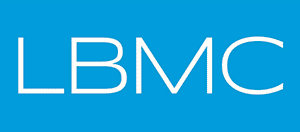Are you ready to unlock the secrets of acing your next interview? The key lies in your ability to sell your unique background and experience, demonstrating why you are the perfect fit for the job and how you can contribute to the company’s ultimate success.
Preparation is the Key to Success.
Immerse yourself in the realm of interview preparation and uncover the secrets to triumph. Conduct thorough research on the company and its culture, anticipate potential questions, and arm yourself with the knowledge that sets you apart from the competition. (review their website, financial information/annual report, LinkedIn profiles, etc.) Make sure your social presence represents you in the right way because they will likely do their research on you too.
In your advanced preparation, have questions prepared or be able to formulate meaningful conversation during the interview to demonstrate knowledge and interest in the position.
Ensure you confirm correct address and location (some companies have multiple locations in the same market)
Sell Yourself with Unwavering Confidence.
Your goal is to present yourself as the candidate every employer wants on their team. This someone knows themselves well, possesses a clear vision of their goals and opportunities, and exudes confidence.
- Identify three key skill sets based on your background that you can bring to the position. Even if the question doesn’t directly ask for them, make sure to incorporate these points during the conversation. After all, you’re selling yourself.
- Anticipate the interviewer’s productive questions. Ask yourself why they might not want to hire you and prepare a defense. Maybe you don’t have the right hard skill, but soft skills are just as important.
- Think positive. Don’t complain about negative experiences during an interview. Even if the interviewer asks emotional intelligence questions.
- Be aware of your body language – (do not fold your arms – appear relaxed, yet poised and confident)
Discover the power of showcasing your skills and experience with unwavering confidence. Leave a lasting imprint on the interviewer’s mind as you unleash your true potential. Let them see why you are the perfect match for the role.
The First 5 Minutes: Make Them Count!
The first few minutes of the interview are crucial. They set the stage for the interviewer’s perception of you. Project a favorable image by arriving early, leaving your cell phone in your car, dressing appropriately (minimal jewelry, no perfume/cologne, and make sure your shoes are clean), and displaying courteous behavior. Introduce yourself with a firm handshake, smile and maintain direct eye contact. Show enthusiasm for the opportunity and exude confidence in your abilities.
Honesty is the Best Policy. Always.
Employers value honesty above all else. Be upfront about your education, employment history, and background. Companies today are thorough in their investigations, so any attempts to embellish your credentials will backfire. Stay true to yourself. If you lack a certain certification, be transparent about it and express your willingness to acquire additional training.
Listen Closely, Stay on Point.
Listen attentively to each question and stay focused on the subject. The interviewer has specific points they want to evaluate, and they have carefully selected questions to achieve that. Avoid dominating the conversation and allow the interviewer to speak. Breathe, relax, and most importantly, listen. Respond succinctly and provide real-life examples that validate your answers. Elaborate when necessary, but avoid going off on tangents. The key is to be clear, concise, and attentive to the interviewer’s needs.
Remember, You’re Also Evaluating the Company.
Don’t forget that you’re there to determine if this company aligns with your aspirations. Show a genuine interest and enthusiasm in the company. It is perfectly acceptable to take notes. Asking about the availability of the position and requesting to meet the manager or team demonstrate your genuine interest.
Aim for a 60/40 focus on what you can contribute to the company’s growth and what the company can offer you. Prepare questions in advance that give you insights into the company’s direction and whether the position offers the growth and development you seek. Save questions about benefits and compensation for later stages, unless explicitly asked by the interviewer.
Post-Interview Etiquette
- Thank the interviewer for their time at the end of the interview and ask about next steps if they were not discussed.
- Ask for a business card(s) from interviewer(s).
- Send an email or handwritten thank you note to the interviewer.
- Call your recruiter and let him/her know how the interview went.
These interview tips provide the necessary tools to conquer any job interview. Don’t miss the chance to leave a lasting impression and secure your dream position.
